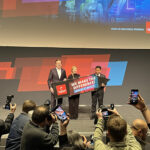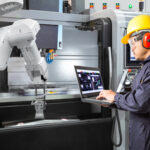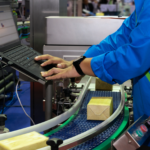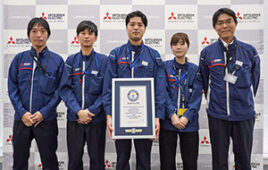Discrete automation’s edge devices include actuators, sensors, and connectivity components such as gateways and motor-mounted controllers. Many of these components feature computational capabilities to minimize data bandwidth and latency issues associated with legacy versions of centralized control. Their installation at the furthest reaches of automated equipment means their processing power is situated to filter and analyze data before it’s sent onward to central controls or connected cloud systems. But as our 2023 Trends panelists point out, the usefulness of such components ultimately relies on their interoperability with various machine systems.
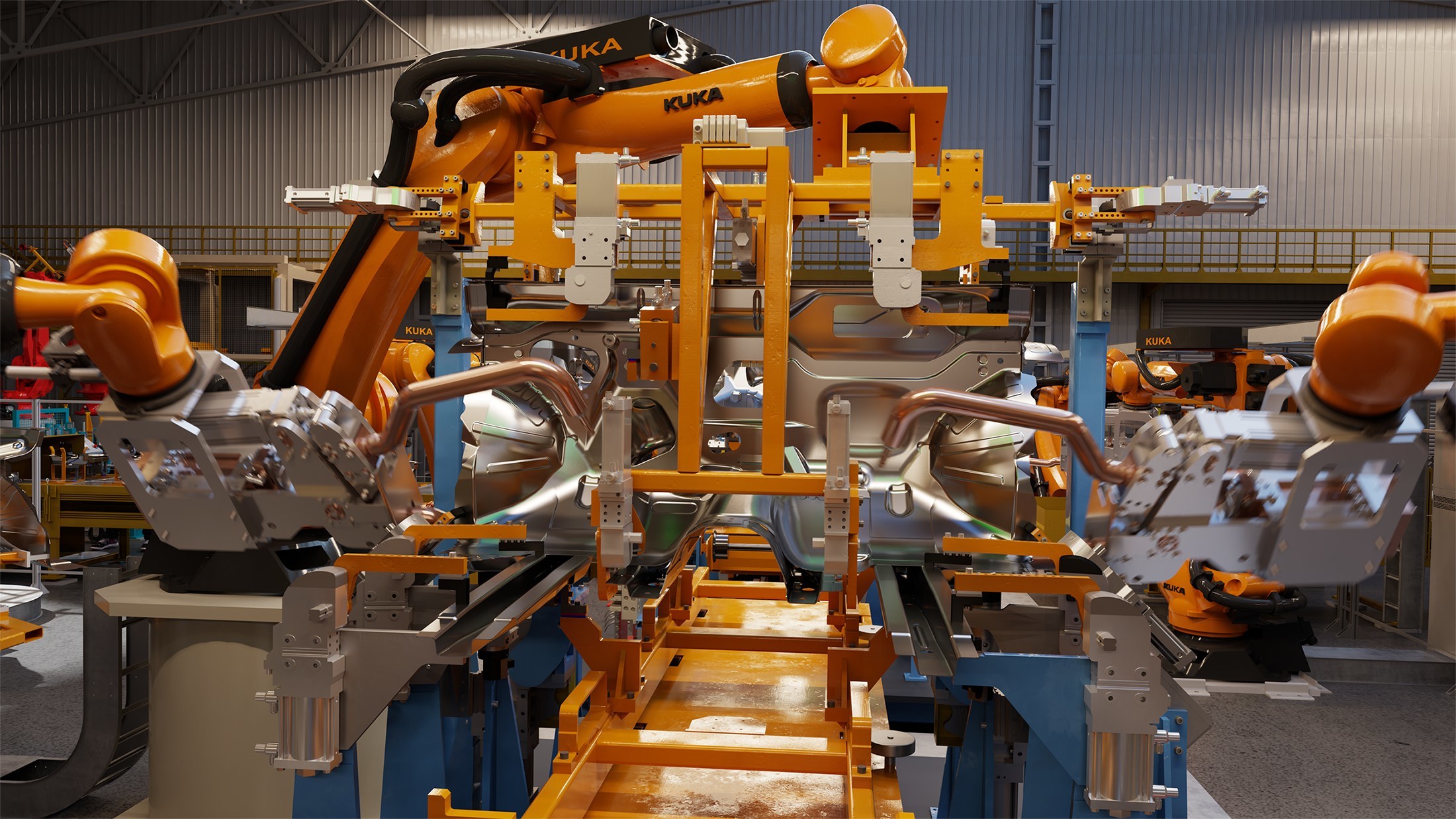
Together, NVIDIA artificial intelligence (AI) and Siemens industrial-automation tools now enable an industrial metaverse for the generation of digital-twins. More specifically, the companies have connected the open digital Siemens Xcelerator business platform and NVIDIA Omniverse 3D design platform for physics-based digital models and realtime AI to help companies make faster and more informed decisions to boost productivity. Adding Omniverse to the Xcelerator partner ecosystem is accelerating the use of digital twins.
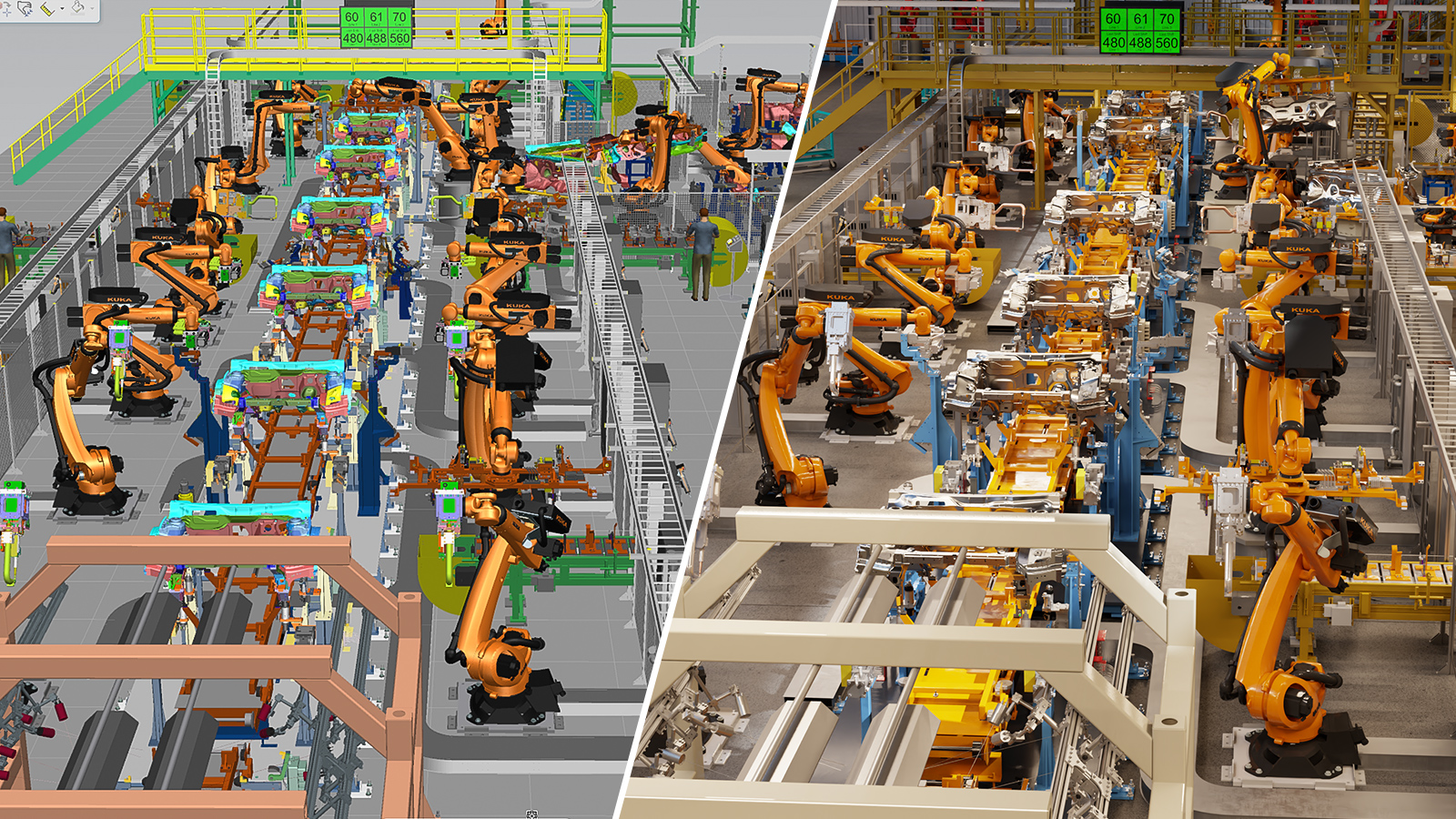
Image: NVIDIA

MEET THE EXPERTS
Richard Johannes | Director of engineering and innovation • LEMO USA
Steven Lassen | Product & applications manager • LEMO USA
Sandro Quintero | Business development for electric automation • Festo
Will Morris | Category manager • RS Americas Inc.
Chris Gumas | Director of marketing • Ruland Manufacturing
Paul Thompson | V.P. solutions engineering • Matterport
Pamela Kan | President and owner • Bishop-Wisecarver Corp.
Chris Gottlieb | Director — Drives and controls • Kollmorgen
Jonathan Schroeder | Executive V.P. • PBC Linear
Bill Paczkowski | Senior product manager for PACEdge • Emerson
Pramit Nandy | Product marketing manager — 16-bit microcontroller division • Microchip Technology
Tim Sharkey | Director of market management for electric automation • Festo
Biren Patel | Business development manager — mobility solutions • maxon
Detail your involvement in efforts to promote standards for increased compatibilities and interoperability.
Quintero: The pandemic, chip shortages, and supply-chain issues have forced endusers to be more receptive to working with various control vendors and not standardize on one. Openness to specifying controllers from an array of suppliers is rippling through the OEM community. One day an OEM may work on a Rockwell system, the next day Siemens, and the next day Beckhoff and Omron. Festo’s response has been to develop next generation multi-protocol solutions. For example, our new servodrive supports EtherNet/IP, PROFINET, EtherCAT, and Modbus TCP. OEMs benefit from having one multi-purpose drive and not having to commission a drive for every protocol. A single series reduces an OEM’s learning curve to a single system, lowers its inventory requirements, and simplifies support.
Patel: Improvements in PCB design and high-density connectors has allowed maxon to develop low-profile micro-position controllers. The EPOS4 micro from maxon can provide 5 A continuously and 15 A peak and is available with CAN or EtherCAT communication.
Gottlieb: Kollmorgen belongs to the ODVA and EtherCAT global groups as well as ZVEI in Germany. We do plug fests to test regimens in and out of the groups, and I’ll say interoperability is really important — because design engineers have choices. Product and specification collaboration helps users maximize development and production efficiencies. So, a machine builder can use one servodrive with different protocol options — with one programming experience no matter the protocol to improve OEM time to market.
Sharkey: Endusers tell us that the benefits of multi-protocol components ripple through their organizations by making inventory, training, machine schematics, wiring, and part numbers more efficient. A single servodrive series and next-generation decentralized I/O help them more effectively serve a wide range of customer requirements. For example, the latest Festo servodrives come with a function-block software library. With PLCopen and other standards, the OEM commissions the drive in the same way for different PLCs. This is a timesaver and lowers the risk of programming errors.
Festo’s new drives can also be accessed via a standard web browser. On multiple-drive machines, OEMs program the drive once, and then the same file is used to set up the remaining files by uploading a parameter file via a web browser. Operators can view drive operation via the web browser; programming issues can be remotely handled, and remote operators can also guide maintenance personnel working on the drives.
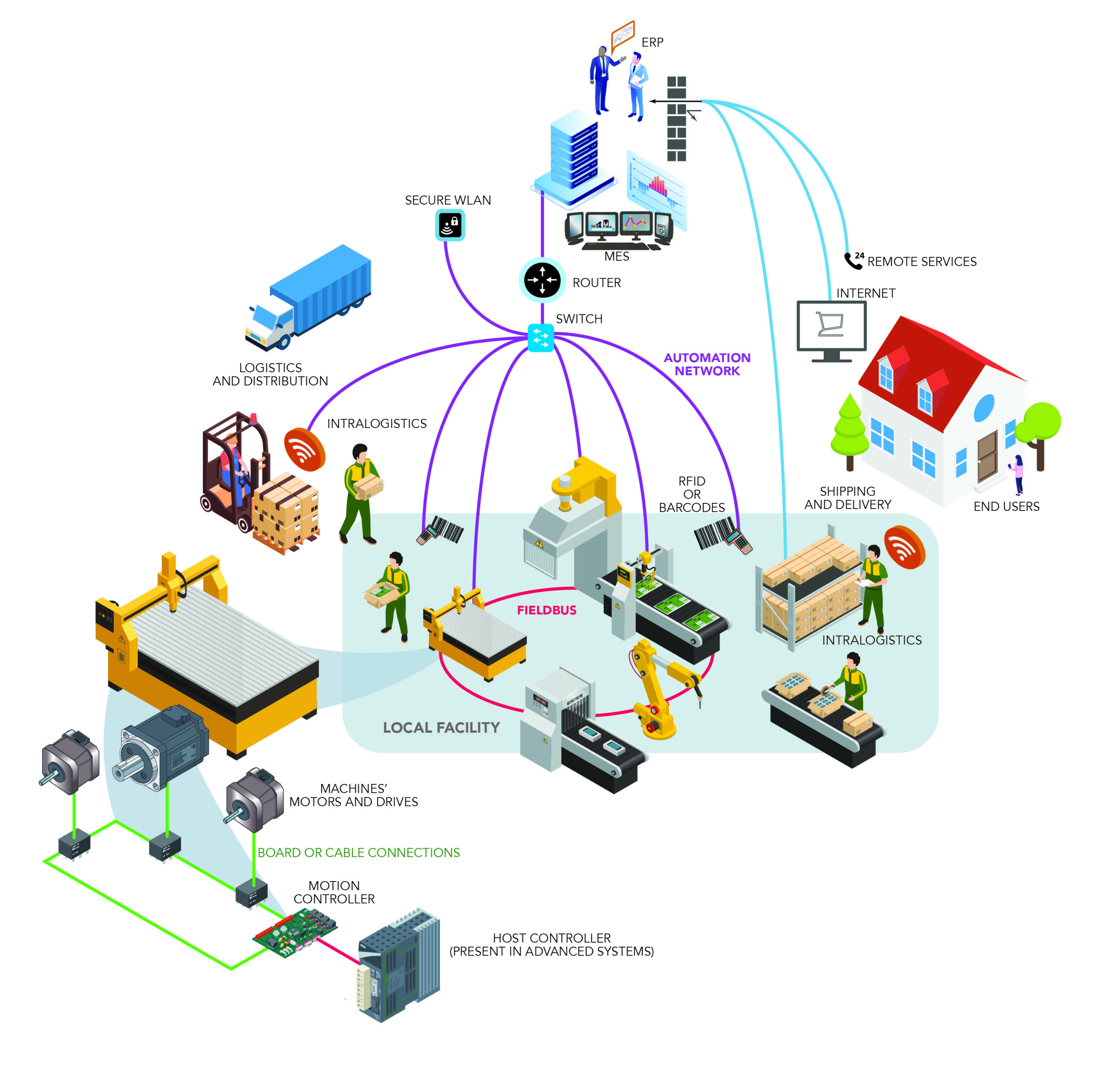
In Design World, we use many examples involving discrete automation to illustrate the possibilities of DX. Here, smart motion controls work by accepting sensor, switch, and encoder feedback and serving as (or triggering the signal-amplifying (amplifier) action of motor controls — all traditional functions. They also serve an additional role of connecting machines to enterprise-level systems.
Kan: We’re longtime members of the Power Transmission Distributors Association (PTDA) and the Association for High Technology Distribution (AHTD). These groups have created industry standards that make it easier to do business. More recently we’ve joined the Association for Advancing Automation (A3) to better serve in all areas of automation.
Gumas: Ruland has been a PTDA member for many years. The association recently announced it will license the Bearing Specialists Association (BSA) product information exchange (PIE) standard for bearings and add categories for shaft collars and couplings. Data normalization is critical for manufacturers to communicate with distributors, OEMs, and endusers in today’s economy.
For example, in our coupling line, the bore size can be called the bore, internal diameter, or shaft size. In everyday language, these terms are interchangeable. In internet speak, these are three different terms. When Ruland works with a distributor, they may use the term shaft size, and Ruland may use bore. Mapping analogous terms (even for straightforward attributes) can require significant human intervention. We have more than 500 attributes at Ruland — any of which can have this challenge.
The PIE seeks to normalize our industry’s language, so everyone works from the same template. Soon, manufacturers will be able to create one map to export their product information management (PIM) data to the PIE standard; then distributors, OEMs, and endusers will be able to create one map to import data to their PIM. Normalization will significantly improve efficiency for engineers, maintenance personnel, and distributor personnel who use this data in their day-to-day work.
Quintero: The proliferation of control architectures is also spurring more adoption of international standards. For example, Festo is a member of the PLCopen community and has adopted the IEC 61131-3 standard for programming languages such as structured text, ladder, and continuous function chart as well as motion control. We believe in a multi-vendor multi-protocol world, standards such as 61131-3 benefit everyone with less engineering time and greater ease of use.
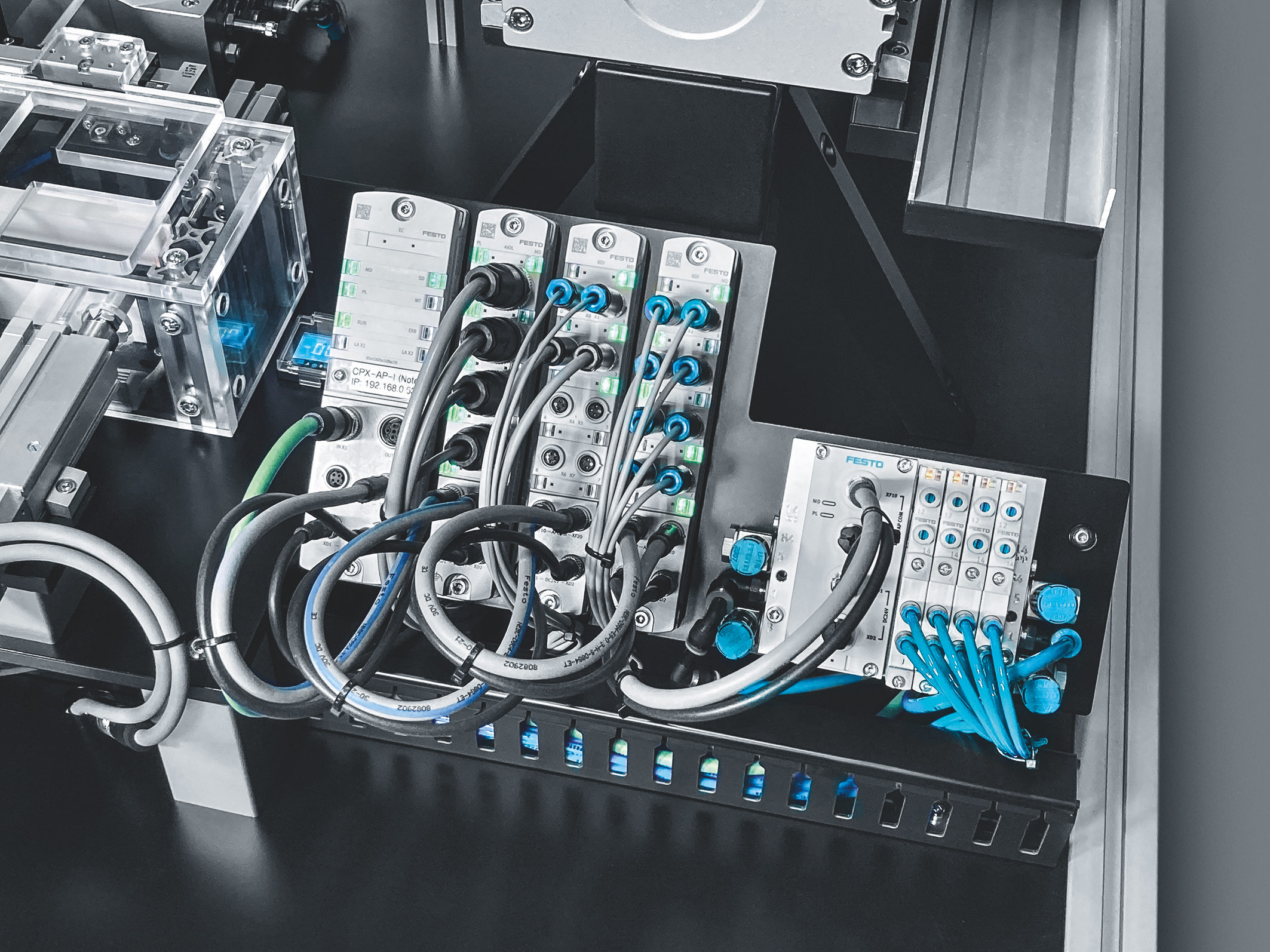
Image: Festo
Sophisticated connectivity for flatter architectures
When picturing a discrete automation installation, many engineers conjure the traditional automation-communications pyramid. Such architectures include data exchanges between field-level sensors and higher implementation layers with communications between controls — all ultimately linking into the pinnacle of the enterprise level. But several technologies have facilitated distributed and intelligent systems with flatter machinery communication structures:
• Today’s software (along with industrial apps not unlike those for consumer-grade mobile devices)
• Newer options such as cloud services — as one networking example
• Hardware such as programmable automation controllers (PACs) and smart field devices — as two component examples
As our panelists explain, these technologies have changed the structure of the intelligent factory floor over the last decade.
What other connectivity and smart-factory trends have you seen over the last year?
Johannes: There’s a major drive to provide both Ethernet and USB protocols via ruggedized custom interconnects (not standard connectors) for medical, industrial, aerospace, and automotive designs. These are challenged by the need to support much longer transmission lengths than those satisfied by copper-based systems. So, non-return-to-zero (NRZ) and pulse-amplitude modulation (PAM) techniques are being applied to minimize attenuation and copper’s impact on signal integrity. LEMO has rugged miniature circular connectors and systems to support USB 3.1 and Ethernet protocols for severe environments.
Quintero: The new Festo decentralized I/O is communications-protocol independent and offers a unified architecture for electric and pneumatic motion, digital and analog signals, and IIoT capabilities. It has a large capacity for components. Decentralized I/O also allows significant distance between components, which brings pneumatic valves closer to the point of actuation and improves response time of pneumatic actuators. Plus decentralized I/O can be located inside or outside a control cabinet.
Sharkey: Controllers are becoming smaller and more powerful. This means that they have limited I/O capabilities. Such controllers benefit from decentralized I/O with one-wire communication back to the PLC for the system’s I/O. Plus decentralized I/O can help shrink the size of control panels by enabling greater numbers of components to be mounted on the machine.
Gottlieb: Motion controllers remain as necessary as always. Our PCMM controller powered by the Kollmorgen Automation Suite features a multi-axis EtherCAT master; supports five programming languages to satisfy any controls engineer; allows six digital inputs and two digital outputs; and allows the addition of extendable I/O. The PCMM’s pricepoint makes it suitable for single-axis machines and more complex machines to 20 axes.
Lassen: When copper’s maximum data rate has been reached, transitioning to fiber optics is necessary for both short and long-distance transmission — especially for digital 4K resolution video transmission. One of LEMO’s unique selling points is its ability to combine copper (power) and fiber-optic components within the same compact rugged connector housing. This makes it much easier for endusers to plug and unplug just a single connector rather than having to locate multiple connector elements. A weak link when integrating fiber into a system is the exposed cabling used between the robust connectors. To address this, cables containing the delicate fibers and electrical conductors can be further protected with flexible armored jacket. For medical applications needing easy cleaning and handling, armored jacket (in products provided by LEMO’s Northwire division) can be extruded to provide a smooth surface.

Rugged-environment LEMO connectors support USB 3.1.
Detail some interesting uses of Amazon Web Services (AWS), IBM Cloud, Microsoft Azure, or SAP Cloud services. Does your company support MQTT-based systems?
Paczkowski: Emerson edge controllers and industrial PCs (IPCs) running PACEdge support MQTT communications, and a wide variety of other operational technology (OT) industrial protocols and IT-centric protocols. MQTT has become a leading way to transmit edge-sourced data to higher-level platforms, due to its low-bandwidth requirements and resilient communication methodologies.
Nandy: As the world is getting more connected, industrial automation and motion-control applications as well as controllers are becoming increasingly complicated. Each system connects via IIoT or edge communications to exchange data, report faults, log maintenance, and run live updates for enhancing as well as optimizing system performance. There’s no one-size-fits-all solution in this space. A complete solution includes the right software, communication protocol, security, and networking solutions to run on a wide range of hardware and systems.
Paczkowski: New equipment and projects can be developed with the latest PLCs/PACs, edge controllers, and IPCs to ensure they seamlessly communicate with each other and higher-level systems. However, there’s a massive installed base of automated equipment needing gradual upgrades. Emerson edge controllers and IPCs are well-suited to serve as the platform for such upgrades, or they can be layered on top of existing automation elements to add modern data handling, remote connectivity, and IIoT capabilities to legacy equipment. Gateways are another class of edge device suitable for complementing existing digital assets. They impart the ability to transfer data to higher-level onsite or cloud-based resources. In fact, engineers today have many options for adding gateway functionalities (and advanced computing) to new and legacy equipment.
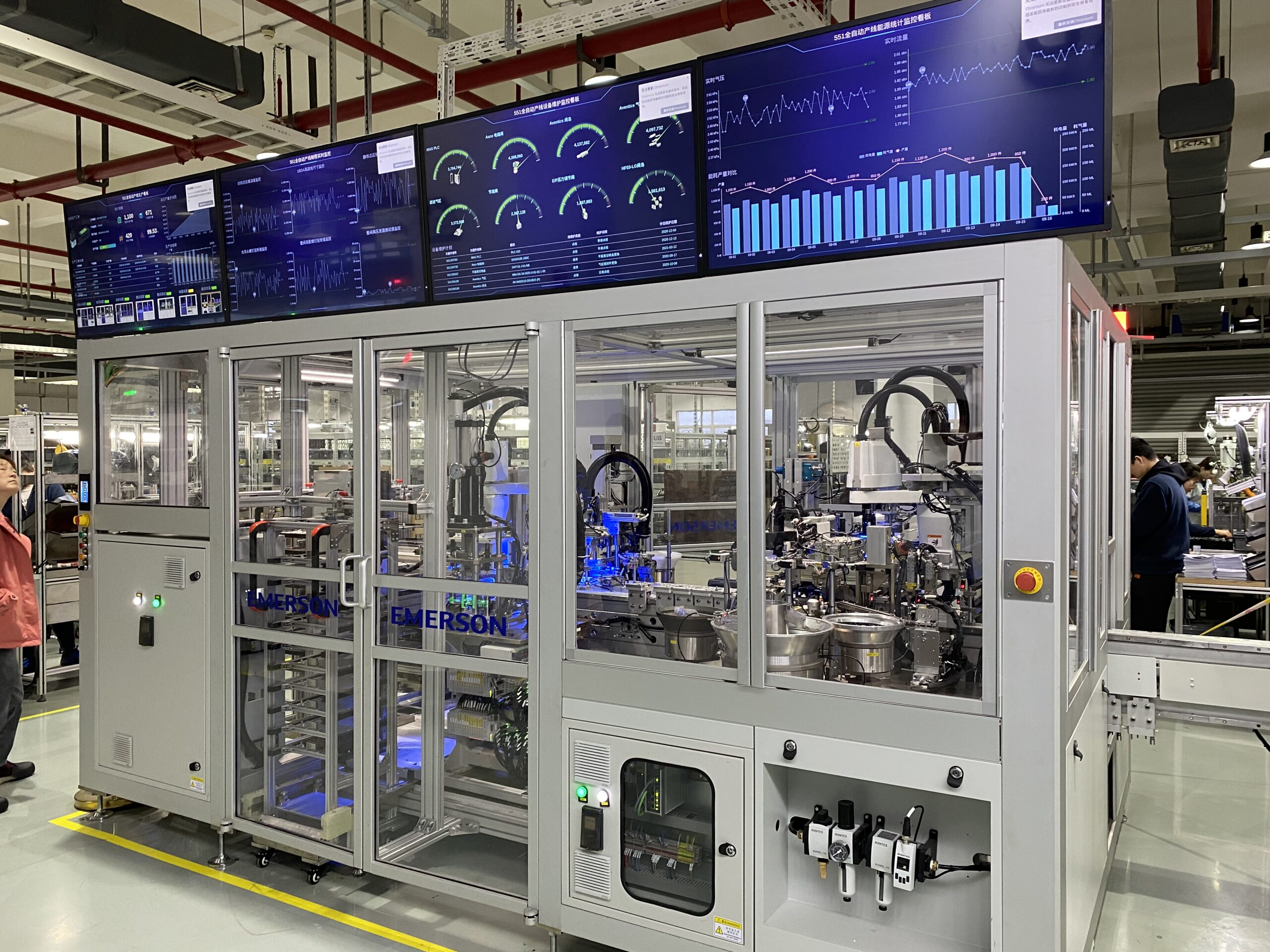
Emerson offers a thoroughly integrated portfolio of hardware and software technologies to let engineers realize digital transformations of new and legacy equipment at every level — from edge-located field devices to control panels and control rooms … and even to the enterprise and cloud.
Thompson: Spatial-data company Matterport is an ISV partner with Amazon Web Services and is listed on the Amazon Partner Network as well as the AWS Marketplace. Our partnership with AWS IoT TwinMaker has enabled:
- The ability to create 3D scenes with spatial anchors linked to real-world data. Users can overlay equipment within a digital twin and then tag the space with anchors to connect models with a knowledge graph created and managed by AWS IoT TwinMaker. This knowledge graph allows integration of data such as heat mapping and controls into the digital twin.
- Better facility management by establishing realtime remote monitoring, process optimization, and historical root cause analysis. Endusers can connect to disparate data sources to optimize site visits and immediately assess issues.
It’s now possible to build web apps on digital twins — including apps for training employees and apps to trigger notifications upon the detection of abnormal device data. With AWS IoT TwinMaker and Matterport, users can contextualize digital-twin data, gather insights and analytics, and access realtime and time-series replicas of their spaces anytime and anywhere.
Wireless industrial applications on the horizon
Increasingly, intelligent factory technologies (complementing Factory of the Future architectures) employ wireless connectivity such as 5G and edge computing to:
• Boost the flexibility of manufacturing
• Allow adaptive production planning
• Predict failures before critical work stoppages.
These capabilities minimize warranty, waste, and downtime costs while boosting worker safety, preferably while satisfying the objectives of machine builders and endusers.
What industrial applications for 5G do you predict over the next five years?
Paczkowski: Wireless connectivity such as Wi-Fi, 5G, and WirelessHART has developed rapidly — both in terms of communication speed and available protocols. Physical installation of copper or fiber cabling is a significant expense with automation projects; once installed, wired infrastructure somewhat limits expandability and future flexibility. So, endusers are finding that modern wireless technologies provide a good way to address many localized networking needs while making it easy to expand or change installations in the future. Emerson PACSystems and PACEdge products support wireless technologies and wired methods, so users have options for all implementation needs.
J. Schroeder: Inc. Magazine has called 5G the catalyst for the world’s fourth industrial revolution. Once 5G networks are operating at full capacity, I believe there will be two key benefits seen by industry and consumers.
First, the increased range offered by 5G networks will allow high-speed data to reach an increased percentage of the globe for more internet-connected devices and the ability to pass data back and forth to servers. Farmers, loggers, miners, wildfire firefighters, and others who operate in remote areas will be able to work in a connected world. This will enable a wide range of devices — including autonomous robots.
The second key advantage of 5G (and Wi-Fi 6 inside buildings) is high speed and bandwidth. The increased capabilities of Wi-Fi 6 and 5G will let devices become smaller and last longer because the bulk of the processing power required will reside on a server, and data will be streamed to the device. Consider how virtual reality (VR) and augmented reality (AR) technologies are electrically and computationally intensive — much more so than streaming. Offloading the processing to a server and converting devices to streaming devices will allow the spread of VR and AR, as field devices will become less costly (due to more modest processor and battery specs) and more ergonomic (due to their lighter weight).
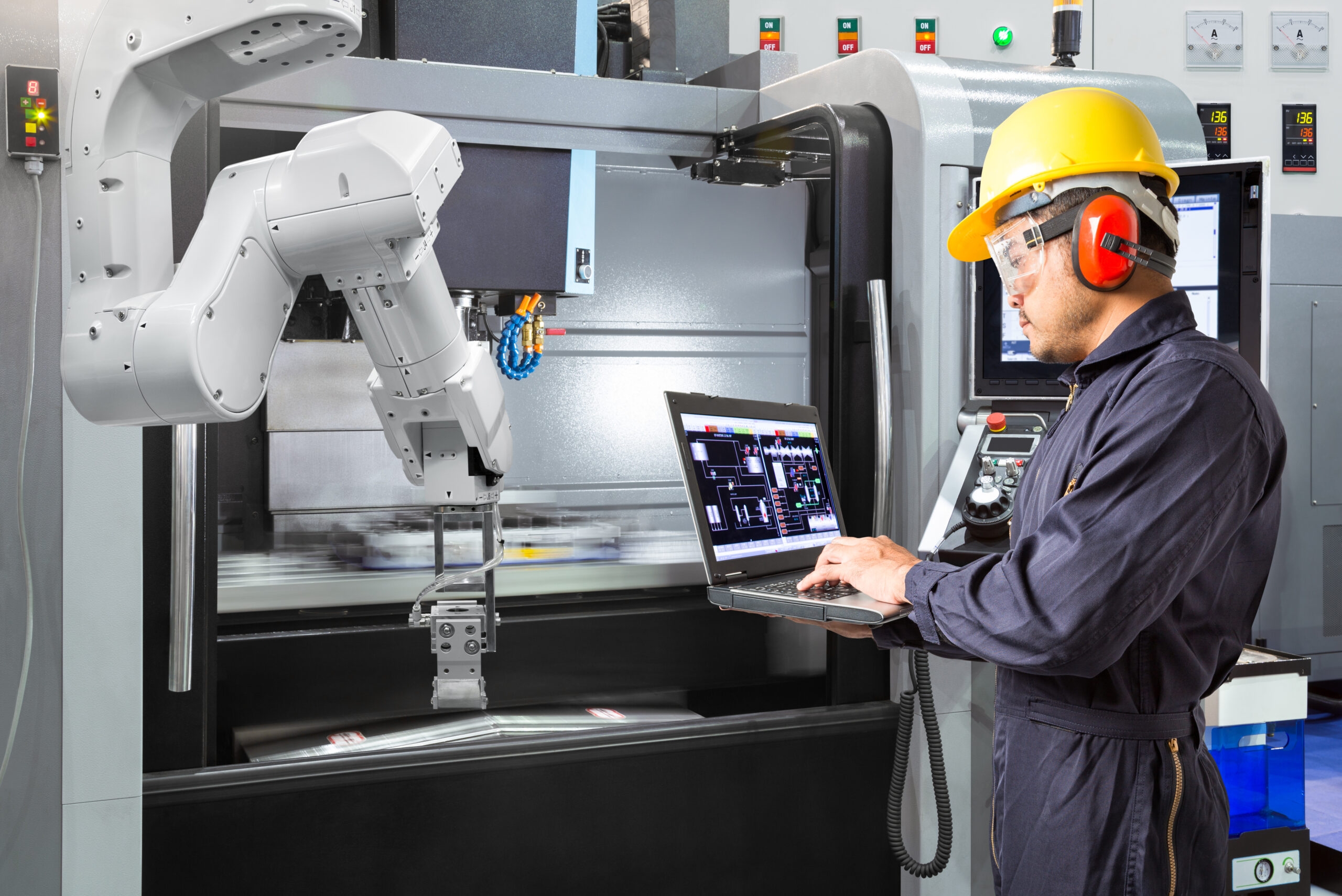
Smart-factory image: Dreamstime • Suwin Puengsamrong
What are your observations regarding IoT connectivity for mechanical components?
Morris: While bearings aren’t new technology, they’ve come a long way. Bearings can be metallic or plastic, and polymers all have different characteristics for use in specific applications — including food-safe and medical applications where metallic bearings are not ideal. Ceramic bearings excel in hot, fast, and abrasive applications. Magnetic bearings, which use magnetic levitation to rotate around a shaft with no actual physical contact, eliminate wear and complement applications needing high speeds and low vibration.
Renewable energy has become a large industry. Wind turbines feature large bearings — typically slewing bearings. The medical industry employs bearings in state-of-the-art technology MRI machines and CT scanners. Robotics have automated many processes; here, bearings complete rotating robotic arms and equipment to move robots vertically and horizontally. EVs also use various bearings, including ceramic bearings for their lightness and high speeds.
Morris: IIoT connectivity and condition monitoring technology for all these bearings has grown rapidly over the last several years. For the first time, maintenance teams, engineers, and technicians have performance and condition data at their fingertips in realtime. Predictive maintenance has become especially advanced in recent years. We no longer have to wait until something fails to fix it; we can see potential problems (as small changes in vibrations, heat, and performance) before they become catastrophic.
Because large bearings can be quite costly (and have months-long leadtimes) predictive maintenance for them has become very useful — particularly with today’s supply-chain and leadtime issues. Performance data can be stored and sent to the cloud for in-depth analysis and then used for engineering improvements and improved maintenance schedules. Plus, all this data can be remotely monitored to reduce 24/7 maintenance-personnel needs by letting staff monitor and respond to issues at several sites at once.
Several products on the market today enable simple and affordable condition monitoring for bearings using sensor-collected data. The latter is analyzed, and the system alerts users to condition anomalies. Users can even monitor the data through mobile apps.
Read the rest of our experts’ insights in Part 2 of this series by clicking here. Also be sure to check out Design World’s June issue for a follow-up article on this topic.
You may also like:
Filed Under: DIGITAL TRANSFORMATION (DX), Trends



